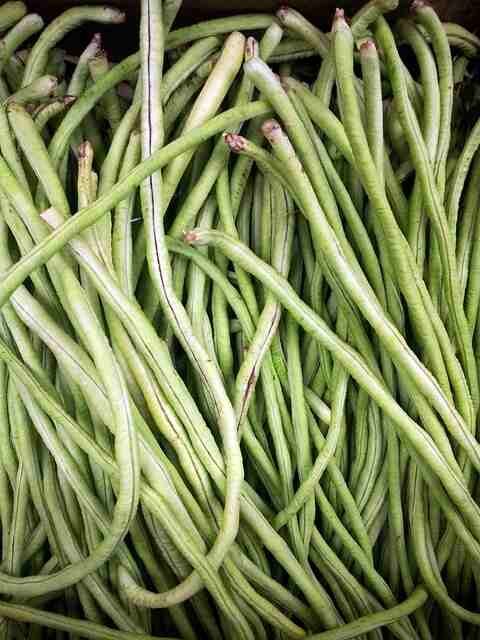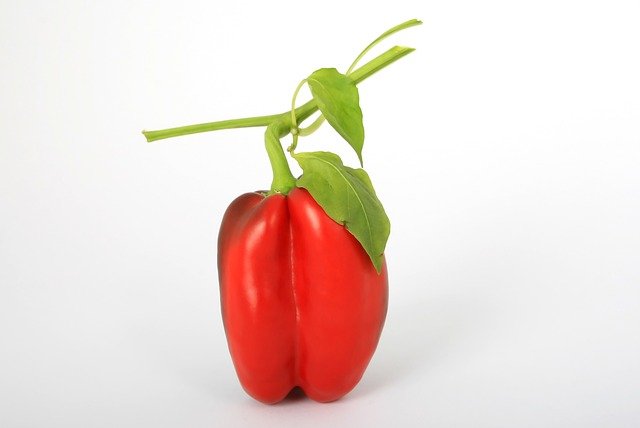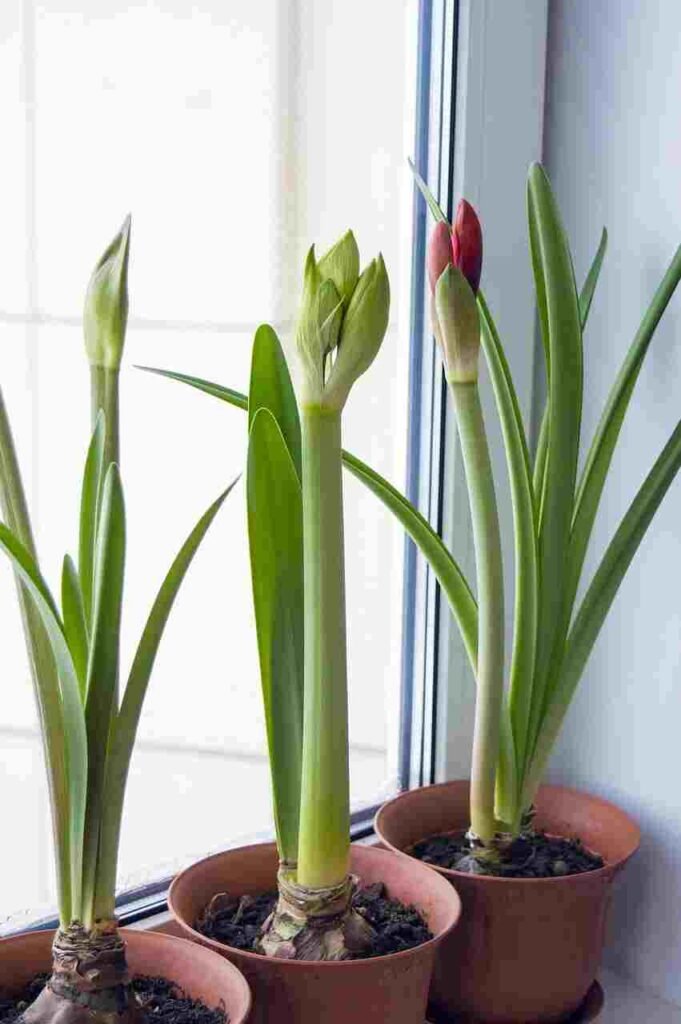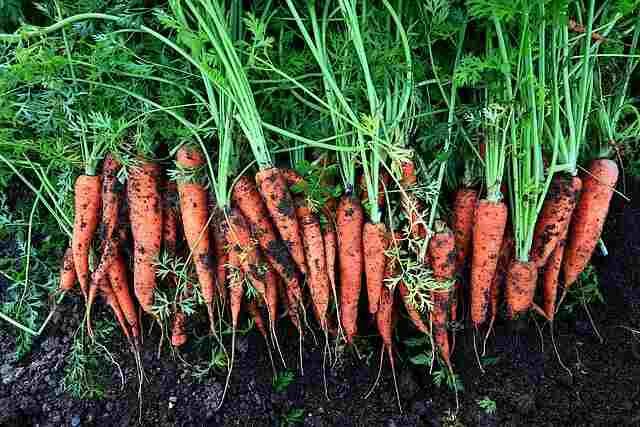Hi, in this article, I’m going to share five of my must-grow essential survival crops that will help keep both us and our wallets healthy. And if you’re not sure how you will even be able to afford to get started, well, do stick around to the end when I’m going to share with you some simple ideas to get all the gear you need for pennies or less.
The five crops I’ve chosen are all easy to grow, and that’s important because we obviously want them to succeed. They are also either high in nutrients or calories, or both, and of course, I’ve chosen vegetables at the pricier end of the grocery shop because our goal here is to save money.
Now, we’ll want an idea of how much produce we can harvest from our chosen crops. To help with this, I’m going to take a standard pallet collar bed here as our unit for comparison. The beds are about three by four feet—that’s one by one point two meters in size—and I reckon five of these, one for each crop, would make a really lovely garden, giving an appreciable amount to harvest. But if you don’t have a garden, don’t worry—all of the crops I’m going to mention can be grown in containers, and we’ll do more on that when we get to them. So without further ado, let’s count down our five must-grow money-saving crops.
Squash

Squash makes our list because it is both incredibly productive and has excellent storage ability. There are two types of squash, and I recommend growing both if you can. The first type is summer squash, which for the purposes of this article includes zucchini or courgettes. Summer squash crops repeatedly throughout the summer—they’re incredibly productive. So if you’ve ever had a neighbor offer up their zucchini, well, there might be a reason behind that generosity!
The second type of squash is our winter squash, which includes pumpkins. Now, these guys are ready to harvest right at the end of the season, and they will store right through the winter in some cases, offering their lovely rich, delicious, nutrient-dense flesh for all sorts of recipes: soups, stews, roasting—you name it. They give something to eat during the really leanest months, so they’re well worth growing. As I say, grow both of them if you can, but if you’ve only got space for one, then perhaps concentrate on the summer squash and zucchini, which will give you those lovely fruits throughout the summer.
After planting, summer squash, zucchini, and courgettes can begin to be harvested as early as a month later. They ought to keep cropping until the first frost as long as you keep picking them. Your colder time of year squash or pumpkins will be collected right toward the finish of the time in early pre-winter. You’ll have to plant your seeds inside in the warm, then, at that point, develop your seedlings in a splendid yet ice free spot, prepared to establish out after your last ice date in spring. Give them a radiant spot and plant into truly rich soil. In the weeks leading up to planting, I simply add loads of garden compost to mine to improve it. To keep your plants in top condition, give them plenty of water. You can grow one squash plant in an enormous holder, however you most certainly should be close by to keep it very much watered throughout the span of the mid year. Our referred to raised bed ought to yield around $32 worth of zucchini or around $15 worth of winter squash.
We, of course, need to include a root crop on our list. I had considered potatoes, but while they are dense in calories, they aren’t exactly the most cost-effective crop to grow because you can pick up a bag for not very much at all. That said, if you do have the space, they are well worth growing because they’re very easy to grow and, of course, they are rich in those calories.
Beets

As it’s the turn of beets or beetroot to act the hero. Beets are wonderful for various reasons: they’re so really great for us, there’s no question about that, they’re extraordinarily flexible; you can juice them, cook them, do a wide range of superb things with them. Furthermore, on the off chance that I lift one up here, you have two yields for the work of one. The roots and the leaves are the same as those of spinach or chard, and they can be cooked and used in the same way. They also grow quickly and are remarkably pest-free, making this a truly simple crop to grow.
Plant the thick seeds a few all at once into plug plate and afterward relocate the youthful seedlings whenever they’ve become on. I prefer to thin the seedlings that emerge to approximately three to four inches, or seven to ten centimeters, apart after spacing the clusters about a foot apart or sowing the seeds directly where they will grow. Any place you’re developing them, keep your beets very much watered to empower quick root improvement and to lessen the possibilities of plants catapulting — when they attempt to blossom, which will influence the nature of the roots. It is amazing that beets can be harvested within ten weeks of being sown. In any case, shouldn’t something be said about those immensely significant details? All things considered, we should investigate. In our standard bed, there’s space for around 42 plants, which ought to save you around $34, however remember you can re-sow, so the genuine saving throughout one developing season is probably going to be no less than two times that.
Kale

We have to have a leafy green on our list because they’re so packed full of vitamins and minerals. So while they’re not the most calorifically dense, they are really packing in the nutrients. Now, I’ve chosen kale because it’s exceptionally easy to grow and it crops throughout the winter months for many months at a time. It’s really bulletproof. But you could also grow, say, cabbage for fermenting or making slaws, or perhaps chard, which is great for freezing. Now, these kale are still a little bit on the small side, the result of a hot, dry summer, but with autumn rains now here, they should grow away really strongly before the winter. When you’re harvesting kale, be sure to take the lowest, oldest leaves so that the ones at the center, the younger ones, will grow on to give you your next harvest.
Kale grows really well in containers. I pop about three into a decent-sized container and keep them well-watered, and boy, do they grow away like triffids, giving lots and lots of those nutrient-dense harvests. So let’s look at the statistics. One bed with well-spaced plants should save you around $37 at the grocery store.
Beans

Beans are incredibly versatile. They can be stored in just so many ways: frozen, canned, dehydrated even. They’re a great source of calories but also a source of plant protein as well. Now, there are different types. Here I’ve got some dwarf or bush beans, and I love these because they can be sown directly here, there, and everywhere, following on from earlier crops. This lot followed on from a salad crop, and they were sown only a few months ago, and look—they’re now ready to pick. But for me, the best way to grow them and the most space-efficient is upwards using climbing varieties of beans. These here are my runner beans, and once they start cropping, there’s no reason you shouldn’t be picking these beans for three, even four months. As long as you keep picking them, they will keep producing them.
For these types of beans, I prefer to sow them in pots, then plant them out as young plants after the danger of frost has passed. I love the way they frame the path here, but you could grow them up, say, a teepee of bamboo canes. If you haven’t got much space, then they grow really well in containers, perhaps trained against some form of trellising, or if that doesn’t work in your space, just stick to bush or dwarf beans. Now, with all that said, let’s look at the stats for our beans. Well, our standard raised bed could yield a potential saving of around $54.
Peppers

My summers are usually a little bit cooler, so tomatoes are the no-brainer here, and they are very prolific indeed. Both are started off in exactly the same way: in the warm, in spring, then grown on and repotted in stages till they’re ready for planting after your last frost. Peppers need minimal support, whereas vining varieties of tomato need tying in at regular intervals to support those, hopefully, weighty fruits. Both make excellent container crops; in fact, peppers are best grown in pots in cooler climates so you can move them about to sit in the sunniest possible location or perhaps somewhere protected.
I’m lucky enough to have a greenhouse, but a sunny windowsill or balcony would do too. I improve the soil before planting with plenty of compost, just like I do for my squash. Then, when the plants are actively growing, I’ll add a liquid tomato feed from time to time to help those fruits ripen up, and I do the same with peppers too. Prices vary a lot between countries, and remember, the prices shown are just averages. Now, for peppers, we have the potential to save ourselves eighty dollars, whereas for our tomatoes, we’ll be saving at least sixty-six.
Now, we’ve been through our five crops, but herbs, as a bonus, you’ve got to grow some herbs as well because they take up very little space. Especially worth growing are perennial herbs. In this bed here, I’ve got some rosemary there, some oregano, thyme, and mint, and then some space towards me here for quick growers like basil and parsley. If you don’t have the space for a bed like this, then just grow some in a pot. I think this looks really beautiful, and I’ve got fresh herbs here to hand when I want them. Herbs are always sold in those little packets, and perhaps you only need a few snippings. Clearly, having herbs on hand is going to save you money, it’s more convenient, and, of course, you’re going to get the freshest pickings.
So what about the cost of growing all this stuff? Well, it doesn’t need to cost the earth. Your first port of call for anything super cheap or even free are sites such as Gumtree or Craigslist. Check under the free section and look for things like old pots and containers, or perhaps there’s some old lumber going begging, perfect for making your own raised bed. If you can’t see what you want, then perhaps place your own advert. There are lots of other sites too, such as Freecycle or Green Eco Services, or look in dumpsters and skips for any goodies, but don’t forget to ask permission first. I’ve found several pallets this way for various projects, and people are only too happy to get rid of them, usually. Now, I love things for free—who doesn’t?—and I’d love to know if you’ve dumpster-dived before. What has been your best find? Let me know in the comments below.
Don’t buy pots for sowing or planting—raid the recycling bin instead. Old yogurt pots, ice cream tubs, fruit trays—they’re all great for starting off seedlings to grow on and then plant outside.
Once you get going, you’ll be able to collect and save some of your own seeds, but to find seeds on the cheap now, well, look in discount stores. You can pick up packets for very little indeed there. Multi-packs are often cheaper than individual packets, and you can often get starter seed collections for not very much at all.
And then, in spring, do look out for local seed swaps—a great source of both cheap seeds and great advice. Potting mixes are an unavoidable cost, but one thing you can get for free is compost by, of course, making your own, and autumn is a great time to start your own heap. Rake up all those leaves; don’t put those to waste—add them onto your new compost bin as well, and a few months down the line, you’ll have plenty of organic matter to feed those new growing areas of yours.
You really don’t need an armory of tools to get started gardening. Now, I just have four tools that I think are essentials: a hand fork, then a border fork for sort of digging and spreading things around, a rake for leveling compost out on your beds, and then a trusty old watering can. If you’re really getting into your gardening and have a bit more space, then you might like to consider investing in a hoe here for easy weeding to get through those annual weeds, and then a springtime rake for raking up leaves, and maybe a wheelbarrow and some pruners too. You really don’t need much kit to get growing, and with my five must-grow reliable money-saving crops, you’ll have everything to not just survive but thrive too.
Thanks for your company today. Happy gardening.



